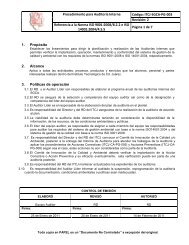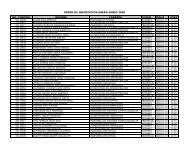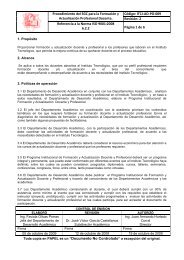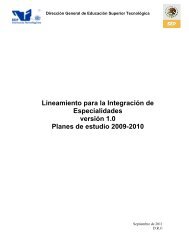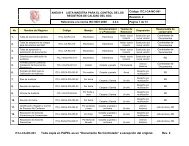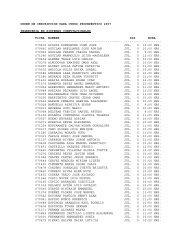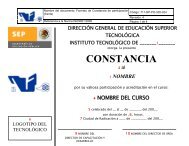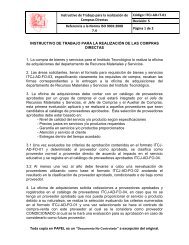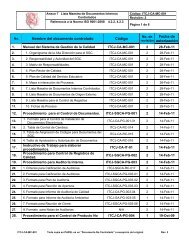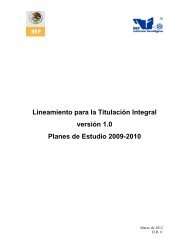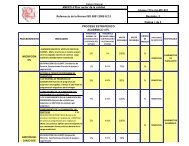Advanced SVC models for newton-raphson load flow and ... - ITCJ
Advanced SVC models for newton-raphson load flow and ... - ITCJ
Advanced SVC models for newton-raphson load flow and ... - ITCJ
You also want an ePaper? Increase the reach of your titles
YUMPU automatically turns print PDFs into web optimized ePapers that Google loves.
116 IEEE TRANSACTIONS ON POWER SYSTEMS, VOL 15. NO. I. PEBRUARY 2000<br />
by the variable susceptance representation. As expected, both<br />
representations have a minimum impact on network losses, but<br />
at the point of <strong>SVC</strong> connection differences can be observed in<br />
the voltage profile <strong>and</strong> in the reactive power contributed by both<br />
<strong>models</strong>.<br />
As discussed in Section 111, the compound generator-constunt<br />
susceptance representation provides an accurate <strong>load</strong> <strong>flow</strong><br />
represetitation of <strong>SVC</strong>'s <strong>for</strong> the complete range of operation.<br />
However, inefficiencies may be observed owing to the need to<br />
reorder <strong>and</strong> to redimension the linearized systems of equations.<br />
In the OPF <strong>for</strong>mulation, further complications may arise with<br />
this compound representation. The multiplier method, which<br />
has shown to be very effective in en<strong>for</strong>cing variables outside<br />
limits, may have difficulties in checking whether or not a <strong>SVC</strong><br />
is operating within limits when represented as a constant susceptancc.<br />
VIII. CONCLUSIONS<br />
Comprehensive <strong>SVC</strong> <strong>models</strong> suitable <strong>for</strong> conventional<br />
<strong>and</strong> optimal power <strong>flow</strong> analysis have been presented in<br />
this paper, namely <strong>SVC</strong> total suscepiance model <strong>and</strong> <strong>SVC</strong><br />
firing angle model. In contrast to <strong>SVC</strong> <strong>models</strong> reported in<br />
the open literature, the proposed <strong>models</strong> do not make use<br />
of the genera<strong>for</strong> concept normally employed <strong>for</strong> the <strong>SVC</strong><br />
representation. Instead, they use the variable shunt susceptance<br />
concept. Arguably, this has the advantage of representing actual<br />
<strong>SVC</strong> operation more realistically. Moreover, since <strong>SVC</strong> shunt<br />
susceptance <strong>models</strong> only make use of one node to represent<br />
<strong>SVC</strong>'s operating inside <strong>and</strong> outside ranges then Newton based<br />
power <strong>flow</strong> solutions become more efficient, compared to cases<br />
when genera<strong>for</strong> based <strong>models</strong> of <strong>SVC</strong>'s are used in Newton<br />
algorithms. An <strong>SVC</strong> model which uses the thyristor firing angle<br />
as the state variable has shown to provide fuller in<strong>for</strong>mation<br />
that existing <strong>SVC</strong> <strong>models</strong>. The firing angle required to achieve<br />
a specified level of compensation becomes readily available<br />
from the power <strong>flow</strong> solution, as well as the fundamental<br />
frequency, internal <strong>SVC</strong> resonant points. A Newton-Raphson<br />
<strong>load</strong> <strong>flow</strong> <strong>and</strong> a Newton's OPF algorithms have been upgraded<br />
to incorporate the new <strong>SVC</strong> <strong>models</strong>. A real-life, bulk transmission<br />
system has been used as the test case. Conventional <strong>and</strong><br />
optimal solutions were obtained in less than 6 iterations.<br />
ACKNOWLEDGMENT<br />
H. Ambriz-PBrez would like to thank Comisi6n Federal de<br />
Electricidad, MBxico <strong>for</strong> granting him study leave to carry out<br />
Ph.D. studies at the University of Glasgow, Scotl<strong>and</strong>, UK.<br />
- .<br />
REFERHNCES<br />
111 CIGRB. workine ~ rouo 38-01, Task F~~~~ N ~ 2 . un <strong>SVC</strong>. -stittic VAR<br />
comnensutors.". I. A. Enrimez. EL. 1986.<br />
sciencc, 1982.<br />
141 IEEE Special Stability Controls Working Glaup, Working Group 38-01,<br />
Task Force No. 2 an <strong>SVC</strong>, "Static VAR compensator <strong>models</strong> <strong>for</strong> power<br />
<strong>flow</strong> <strong>and</strong> dynamic per<strong>for</strong>mance simulation," IEEE T,una. on Po'owrr Syrtems,<br />
vol. 9, no. I, pp. 229-240, Feb. 1995.<br />
151 J. 1. Rico, E. Acha, <strong>and</strong> 1: J. H. Miller, 'Harmunic dainain modelling of<br />
three phme thyristor-cuntmlled ceilctors by means of switching vectors<br />
<strong>and</strong> tllscmte COrIVOIUtionS," /BEE Pwl.;. on Power. Delivery, vol. I I, no.<br />
3, pp. 1678-1684, July 1996.<br />
I61 C. R. Fuerte-Esquivel, E. Acha, S. G. Tang, <strong>and</strong> J. I. Rico, "Ellicient ohjcct<br />
orienled power systems saftwarc <strong>for</strong> the antilysis of lsrge~scalc networks<br />
containing FACTS-controlled branches," IBm 7mns. on Power<br />
Sy.~lons, vol. 13, no. 2, pp. 464472, May 1998.<br />
171 E Aboytes <strong>and</strong> G. Arroyo, "Sccurity assessment in the operation of 1011-<br />
gitudinal power systems,"lEEE Trans. on PwrrSystcms, vol. PWRS- I,<br />
no. 2, pp. 225-232, May 1986.<br />
181 D. I. Sun, B. Ashley. B. Rrcewer, A. Hughes, <strong>and</strong> W. E Tinney, "Optimal<br />
power <strong>flow</strong> by Newton approach," IEEE Tmns. on I'owerAppapnmtusnnd<br />
Sysrems, vol. PAS-103, no. IO, pp. 286G2880, Oct. 19x4.<br />
I91 D. 1. Sun, T. I. Hu, G. S. Lin, C. 1. Lin, <strong>and</strong> C. H. Chen, "Expericnces<br />
wilh implementing optimal power <strong>flow</strong> <strong>for</strong> ceactive scheduling in the<br />
Taiwan power system," I Trrms. on Power S),,rremu, vol. 3, no. 3, pp,<br />
1193-1200, Aug. 1988.<br />
I101 D. P. Bettsekas, "Multiplier methods: A wrvcy," in Auroniurlco: PergamonPress,<br />
1976, vol. 12, pp. 133-145.<br />
[I 11 D. G. Luenberger, Intmducfirm to Linear <strong>and</strong> Nonlineur Pmgramming,<br />
2nd e& Addisun-Wesley Publishing Ca., 1984.<br />
It. Aeha was horn in Mexico. He graduated from University of Michoilcdn<br />
in 1979 <strong>and</strong> rcceiverl the Ph.D. degrcc from the University of Canterbury,<br />
Christchurch, New Zeal<strong>and</strong>, in 1988, He was a postdoctoral Fellow at the<br />
University of Toronto, Cantidti <strong>and</strong> the Univcrsity of Durham, Engl<strong>and</strong>. He<br />
is currently n Senior Lecturer ut the University 01 Glasgow, Scotl<strong>and</strong>, wherc<br />
hc lectures <strong>and</strong> conducts mseilrcli on power systems analysis i~nd power<br />
electronics applications. His research interests arc in the aceus of FACTS,<br />
custom power, <strong>and</strong> real-time modeling <strong>and</strong> iinalysis.<br />
C. R. Focrte-Esqaivel was barii in Mexico in 1964. He received the B.Eng. degree<br />
(Hans) from Institute Tecnol6gicn de March, Mexico in 1990, the MSc.<br />
degree 1wm lnstiluto Politecnico Naciunal, Mexico in 1993, <strong>and</strong> thc Ph.D degree<br />
from the University dGlasgaw, Scotl<strong>and</strong>, UK, in lY97. He is currently :NI<br />
Assistant Professor at thc Institute TecnolOgico de March His main research<br />
interests lie oil the dynamic <strong>and</strong> steady-state analysis of FACTS, custom power,<br />
<strong>and</strong> real-time modeling <strong>and</strong> analysis.




